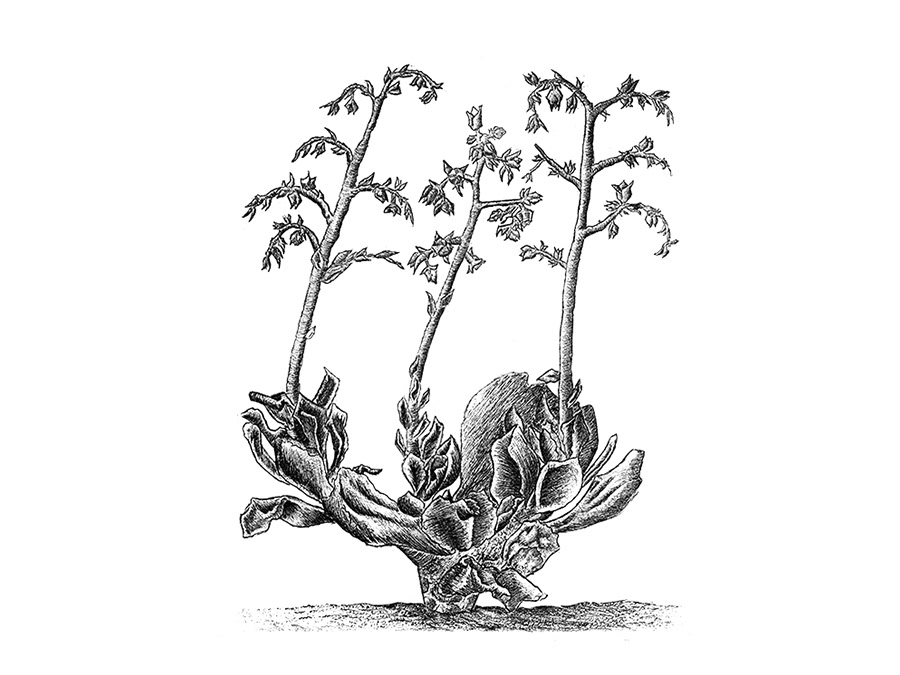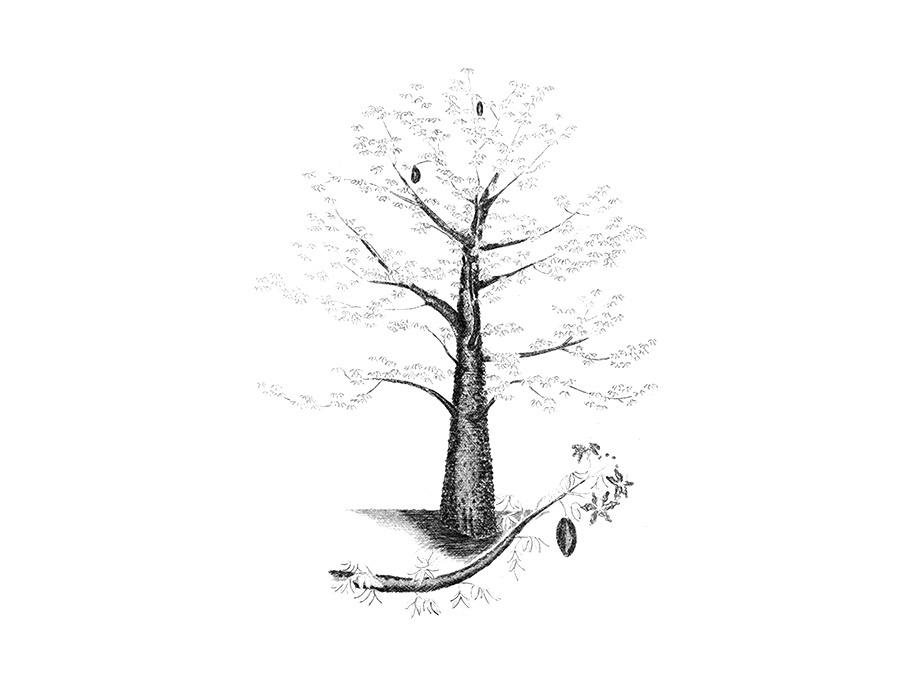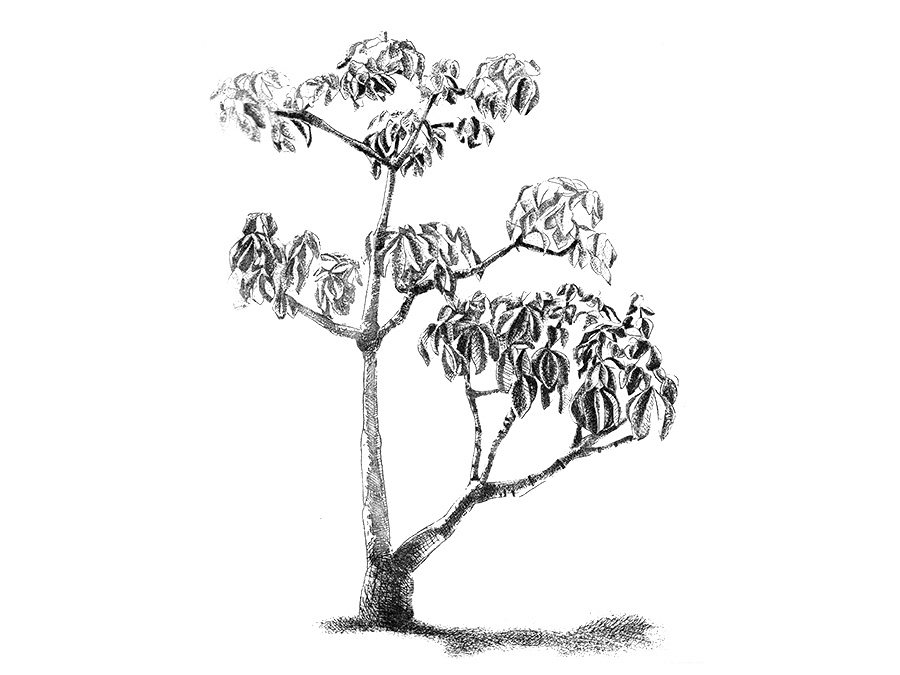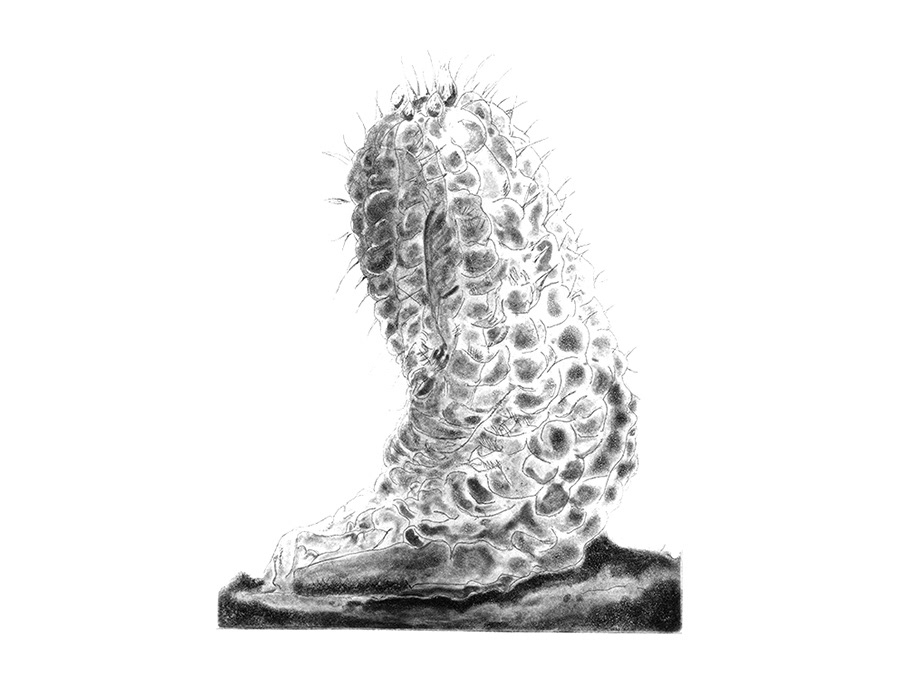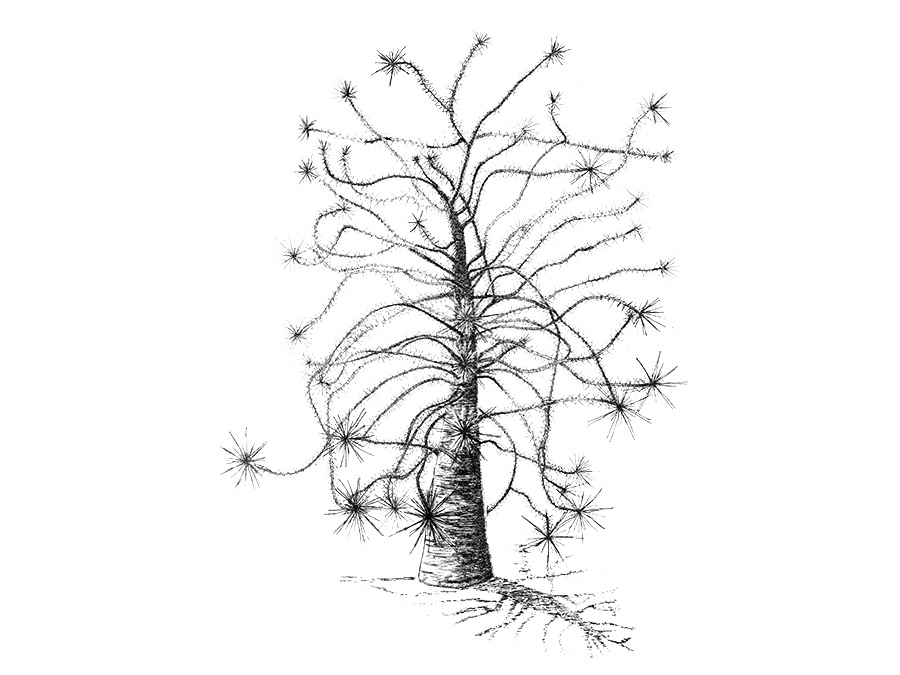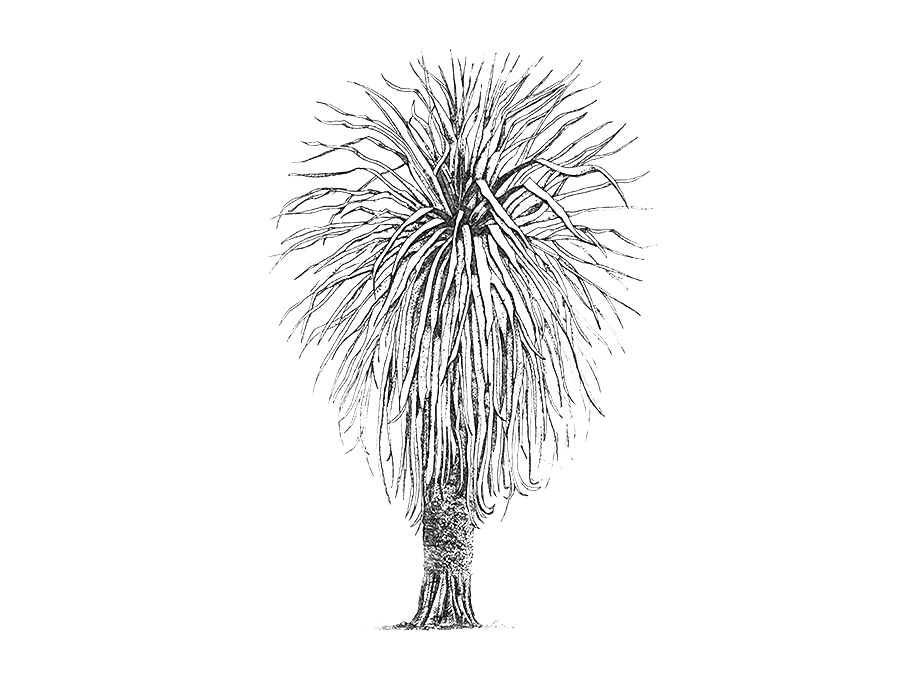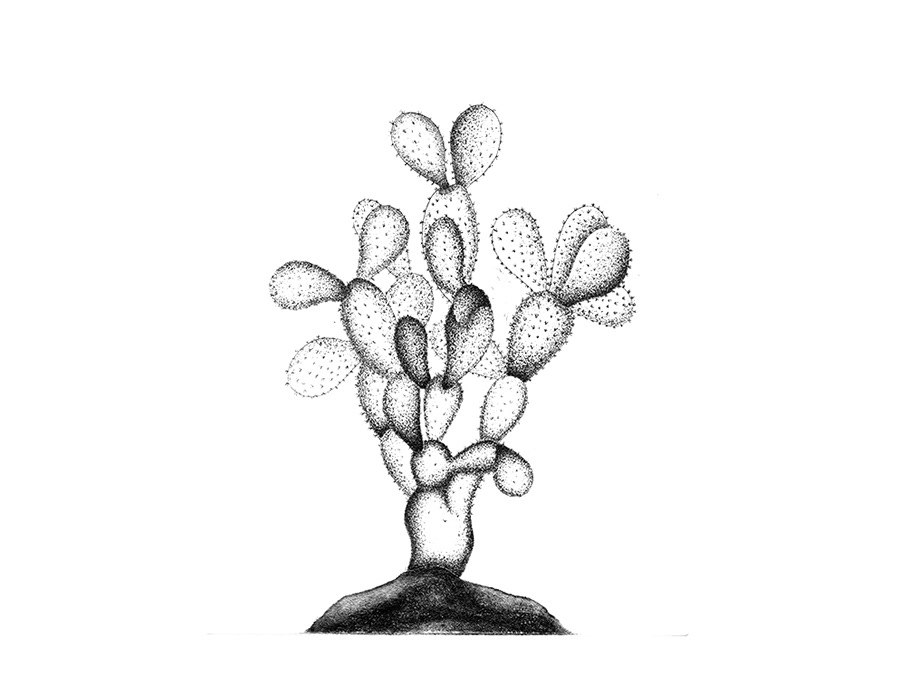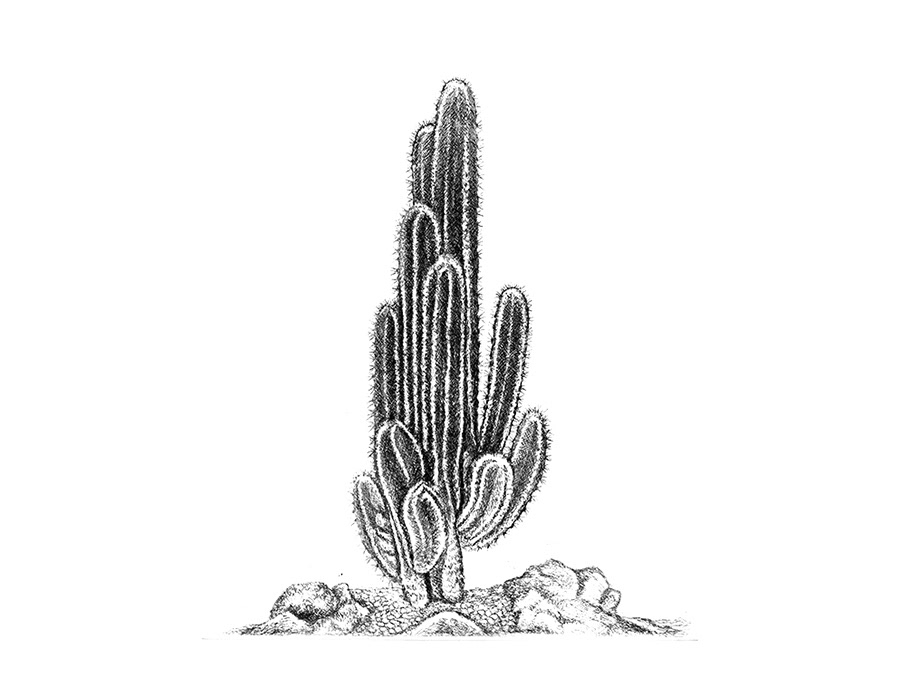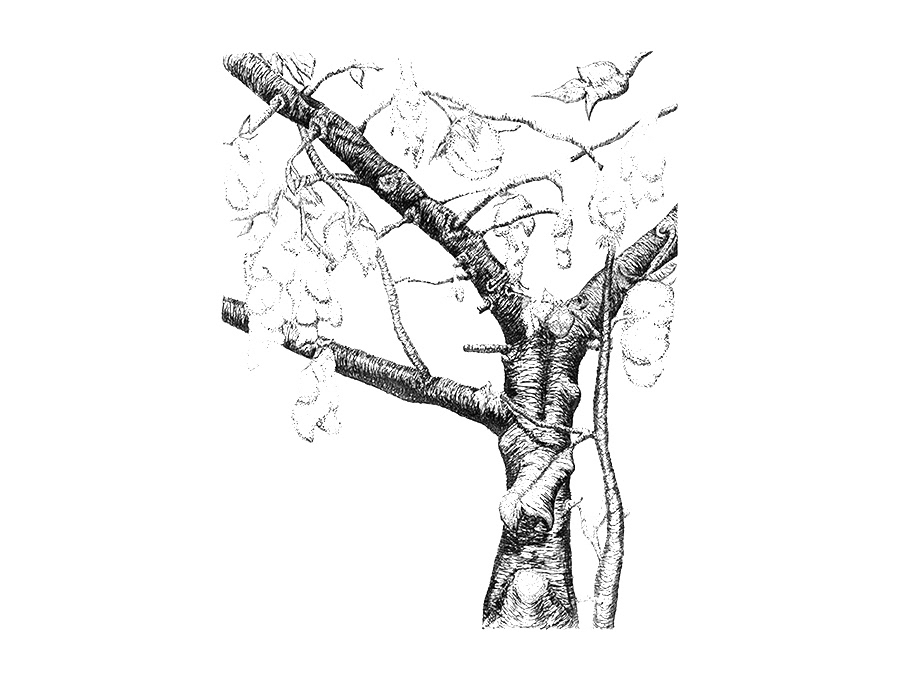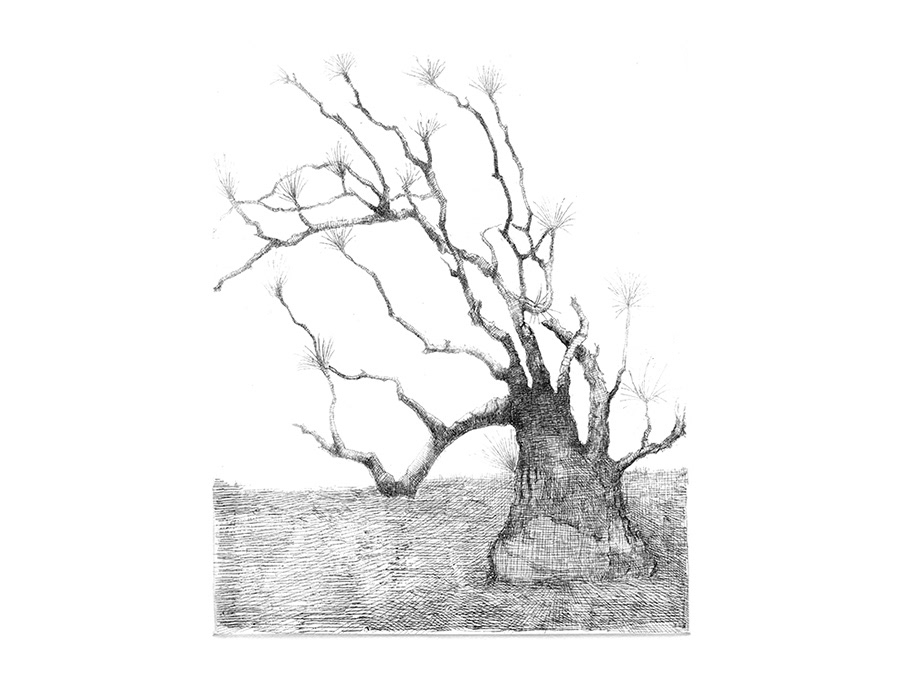Wild Maguey • Agave sp. nov.
"This beautiful maguey is a new species, meaning that it has not yet been formally described and named in Latin by a botanist. It is also an endemic plant of Oaxaca, which means it does not grow in the wild outside the State. It comes from Mitla, the only valley where it has been found so far; therefore, it appears to be endemic to the "Place of the Dead," the name of the site in Zapotec and Nahuatl. Agavaceae is an exclusively American family that is distributed from southern Canada to Paraguay and the Guianas. All the genera and 75% of the nearly 300 species are native to Mexico. Our country thus constitutes the area of greatest diversity for the family and its probable center of origin. The Agave genus has a similar distribution, ranging from Utah and Nevada to Peru and Venezuela, with the highest species richness recorded in Oaxaca. As a source of food, alcohol, fiber, medicine, fuel, and construction materials, magueys have been the most important group of plants for human subsistence in Mexico, from the early hunting and gathering groups to today's mezcal, tequila, and henequen producers." "We have not recorded any current use for this maguey, which was likely used in some way by the people who inhabited Guilá Naquitz and other caves between Mitla and Yagul ten thousand years ago. As it has not been described yet, the plant is not included in the official Mexican standard that protects native wild species, but we believe it should be included due to its restricted distribution and low population density. Its discovery highlights how little is known about the flora of Oaxaca, even in areas near the city; every botanical expedition to more remote areas of the State documents new species of all kinds of plants. We are grateful to Dr. Abisaí García Mendoza, a researcher at the UNAM Botanical Garden, for identifying this species. Bibliography: • García Mendoza, Abisaí 1989. "The Agavaceae family in the State of Oaxaca, Mexico." Cactáceas y Suculentas Mexicanas, XXXIV: 16-22. • García Mendoza, Abisaí 1995. "Richness and endemism of the Agavaceae family in Mexico." In: Linares, Edelmira, et al. (eds.) Conservation of endangered plants: different approaches. Pages 59-83. UNAM, Mexico City. • García Mendoza, Abisaí, and Raquel Galván V 1995. "Richness of the Agavaceae and Nolinaceae families in Mexico." Boletín de la Sociedad Botánica de México, 56: 7-24.
You may also like
